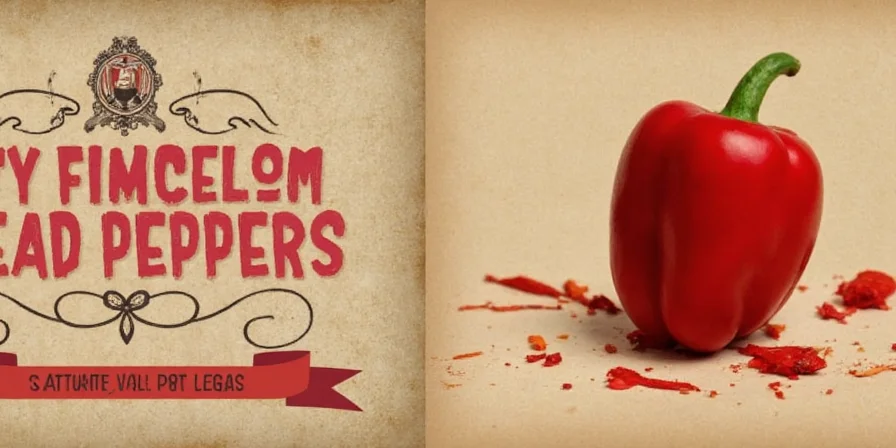
Peppers ready to spice things up!
Table of Contents
- Understanding Fresh Chili Peppers
- Heat Levels: Science Behind the Scoville Scale
- Culinary Applications: Beyond Basic Salsas
- 5 Advanced Cooking Techniques for Precision Heat Control
- Flavor Chemistry: Why Ripeness Changes Taste Perception
- Storage Science: Extending Freshness Without Flavor Loss
- Molecular Pairing: How Compounds Interact with Other Spices
- Scientific Misconceptions in Pepper Handling Debunked
- Conclusion: Strategic Heat Integration for Balanced Dishes
- Frequently Asked Questions
Understanding Fresh Chili Peppers
While "head pepper" isn't a recognized botanical term, it commonly refers to fresh chili varieties like poblano, anaheim, or habanero in culinary contexts. This guide focuses on scientifically accurate characteristics of these peppers rather than colloquial labels. Fresh chilies contain capsaicinoids—the compounds responsible for heat—concentrated primarily in the placental ribs and seeds. Understanding their structural composition helps home cooks manipulate heat levels intentionally.
A spectrum of fresh chili varieties demonstrating color-ripeness relationships
Heat Levels: Science Behind the Scoville Scale
Heat perception varies due to genetic differences in TRPV1 receptors. The Scoville scale measures capsaicin concentration, but actual experience depends on individual biology. This chart reflects verified ranges from agricultural research:
| Pepper Variety | Scoville Heat Units (SHU) | Practical Culinary Application |
|---|---|---|
| Anaheim | 500 – 2,500 | Ideal for mild roasted pepper sauces where texture matters more than heat |
| Jalapeño | 2,500 – 8,000 | Best for pickling; heat stabilizes during vinegar preservation |
| Poblano | 1,000 – 2,000 | Optimal for chiles rellenos due to thick walls and moderate heat |
| Habanero | 100,000 – 350,000 | Use in minute quantities for tropical fruit salsas; heat integrates seamlessly |
Culinary Applications: Beyond Basic Salsas
Modern gastronomy leverages chilies' hydrophobic properties for oil-based infusions. Their versatility extends to unexpected applications:
- Emulsion stabilization: Finely minced chilies help bind vinaigrettes
- Temperature-controlled infusion: Low-heat oil extraction preserves volatile flavor compounds
- Beverage enhancement: Muddled peppers add complexity to craft cocktails
- Meat tenderization: Acidic components break down muscle fibers in marinades
- Dessert pairing: Dark chocolate amplifies fruity notes in ripe habaneros
Scientific approach to pepper-infused oil preparation
5 Advanced Cooking Techniques for Precision Heat Control
- Rib retention strategy: Keep 20% of white ribs for balanced heat without overwhelming burn
- Acid-heat modulation: Add lime juice during cooking—not after—to neutralize alkaline capsaicin
- Thermal degradation timing: Sauté peppers for 7 minutes to reduce heat by 30% while preserving flavor
- Oil selection science: Use avocado oil (high smoke point) for clean heat extraction without bitterness
- Dairy integration method: Fold yogurt into sauces at 40°C to prevent curdling while tempering spice
Flavor Chemistry: Why Ripeness Changes Taste Perception
As chilies ripen, biochemical transformations occur:
- Green stage: Chlorophyll dominance creates grassy notes; capsaicin concentration peaks
- Color transition: Carotenoid development introduces fruity esters (e.g., ethyl butyrate in red jalapeños)
- Full ripeness: Sugar accumulation (up to 8% Brix) counterbalances heat through osmotic effects
- Unique insight: Ripe red chilies contain higher dihydrocapsaicin—producing slower-building, longer-lasting heat versus the immediate sharpness of capsaicin in green varieties
Color-ripeness correlation in fresh chili varieties
Storage Science: Extending Freshness Without Flavor Loss
Pepper deterioration follows enzymatic browning pathways. Optimal preservation methods:
- Refrigeration protocol: Store in perforated bags at 90% humidity; ethylene absorbers prevent premature ripening
- Freezing methodology: Blanch for 90 seconds before freezing to inactivate polyphenol oxidase enzymes
- Drying science: Dehydrate at 55°C for 12 hours to preserve volatile oils versus sun-drying
- Oil preservation chemistry: Acidified oil (pH<4.6) prevents botulism while extracting flavor compounds
Molecular Pairing: How Compounds Interact with Other Spices
Flavor synergy occurs through compound interactions:
- Cumin – Thymoquinone binds with capsaicin, creating smoky depth without increasing perceived heat
- Coriander – Linalool counters capsaicin's irritation through TRPA1 receptor modulation
- Garlic – Allicin enhances capsaicin solubility in aqueous solutions
- Lime – Citric acid forms hydrogen bonds with capsaicin, reducing volatility
- Unique insight: Smoked paprika's guaiacol compounds create a trigeminal illusion of increased heat through cross-activation of pain receptors
Scientific visualization of spice compound interactions
Scientific Misconceptions in Pepper Handling Debunked
Common errors rooted in outdated food science:
- Myth: Water cools burning mouth – Capsaicin is hydrophobic; dairy fats are required for effective binding
- Myth: Heat level is consistent within batches – Environmental stressors cause 40% SHU variation even on single plants
- Myth: Seeds contain most heat – Placental tissue holds 80% of capsaicin; seeds absorb oil secondarily
- Myth: Cooking destroys heat – Capsaicin degrades above 160°C; standard sautéing preserves 90% potency
- Myth: Allergic reactions indicate heat tolerance – Histamine responses are unrelated to TRPV1 receptor sensitivity
Conclusion: Strategic Heat Integration for Balanced Dishes
Mastering fresh chilies requires understanding their biochemical properties rather than following generic advice. By leveraging ripeness stages, strategic pairing, and precise heat application, home cooks can engineer dishes where spice enhances rather than dominates. The key is viewing chilies as complex flavor vehicles with adjustable heat parameters—transforming them from simple irritants into sophisticated culinary tools that create layered sensory experiences.
This guide targets intermediate home cooks seeking scientific approaches to spice management. You'll gain actionable techniques for predictable heat control, moving beyond trial-and-error to develop dishes with intentional flavor architecture.










 浙公网安备
33010002000092号
浙公网安备
33010002000092号 浙B2-20120091-4
浙B2-20120091-4